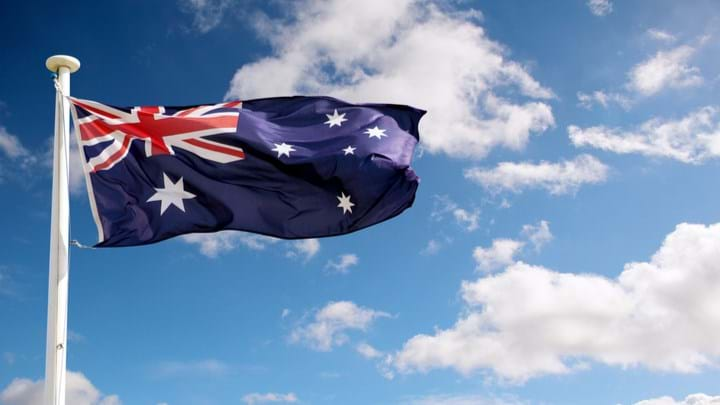Australia’s commits A$22.7bn to green energy and production in latest federal budget

HYDROGEN, critical minerals, batteries, and low-carbon fuels are set to benefit from a multi-billion-dollar package of measures announced by the Australian government. Part of the Future Made in Australia initiative, the A$22.7bn (US$15.2bn) budget, which includes previously announced spending plans, is designed to address structural and strategic challenges facing the country’s economy.
“Our plan will maximise the economic and industrial benefits of the international move to net zero and secure Australia’s place in a changing global economic and strategic landscape,” the government said. It expects the funding will create more jobs and encourage private sector investment.
Rhys Tucker, chair of IChemE’s Australia Board, said: “The Australian government has committed to specifically support industry sectors, such as green hydrogen, green metals, batteries, and low-carbon liquid fuels who heavily rely on chemical engineering skills.
“This commitment will help reinvigorate the energy transition by encouraging investment, and providing incentives which will make Australian industry competitive internationally when compared with other international support programmes such as the US Inflation Reduction Act (IRA).
“Hopefully, this leads to transformational projects moving from just being studied and into reality.”
IChemE has previously provided comment on Australia’s Critical Minerals Facility and Hydrogen Headstart, which are included in the 2024/25 federal budget.
A hydrogen boost
Among the Future Made in Australia priority industries, hydrogen will receive focused support with government announcing around A$8bn to come over the next ten years, and after that an average of A$1.2bn/y to 2040/41.
The government’s hydrogen backing includes a production tax incentive that will offer A$2/kg of renewable hydrogen produced between 2027/28 to 2039/40, for up to ten years per project. The government expects to spend A$6.7bn over the next ten years, and an extra A$1.1bn/y from 2034/35 to 2040/41.
Hydrogen Headstart, a programme to support early movers in the industry, is set for another round, receiving A$1.3bn over the next decade, and around A$151.6m/y from 2034/35 to 2038/39. In January, the government shortlisted six projects in with a chance of winning funding in the first round of the programme.
Meanwhile, Australia’s National Hydrogen Strategy will receive a A$17.1m boost. First published in 2019, and reviewed in 2023, the strategy focuses on making the nation a global hydrogen leader by 2030.
More renewables support
Further renewables support will come through the Australian Renewable Energy Agency (ARENA), including a new A$1.7bn Future Made in Australia Innovation Fund. ARENA will use the fund to support projects in their early stages through commercialisation. It will focus on priority areas such as hydrogen, green metals, low-carbon liquid fuels, and clean energy technology manufacturing, including batteries.
Battery manufacturing will also receive focused support with the budget allocating A$549m over eight years. A$523.2m will be used to establish the Battery Breakthrough Initiative. Also administered by ARENA, the initiative will promote the development of manufacturing capabilities through production incentives.
Strengthening critical minerals
The government will also incentivise refining and processing of critical minerals. It plans to offer a tax incentive valued at 10% of the relevant processing and refining costs for Australia’s 31 critical minerals, for production between 2027/28 and 2040/41. It expects this will cost A$7bn over the 11 years from 2023/24, and an average of A$1.5bn/y from 2034/35 to 2040/41.
This year, the government will spend A$10.2m to develop pre-feasibility studies of common-use infrastructure to promote a competitive and productive critical minerals sector.
It will also provide up to A$655m under its existing A$6bn Critical Minerals Facility, which finances mining and processing projects.
Skills support
Acknowledging the need for a diverse and skilled workforce in the transition, Australia is also budgeting for several people-focused initiatives. To support the development of a clean energy workforce, the government will invest A$91m in the five years from 2023/24 and an additional A$600,000 over three years starting from 2028/29. This will go towards efforts such as supporting teachers and trainers and upgrading training facilities.
Separately, the National Hydrogen Skills Training Centre will receive A$10m. In partnership with the Victorian government, the centre will promote the development of a skilled hydrogen workforce to support the growing industry.
Other workforce spends include boosting diversity in STEM with A$38.2m over eight years from 2023/24, and an ongoing A$1.3m/y. Meanwhile, A$55.6m will support the establishment of the Building Women’s Careers programme, which will expand support for women training in clean energy and other key industries.
Alexandra Meldrum, vice president of IChemE’s Learned Society, said: “As the Australian economy undergoes transition to a clean energy economy, workforce shortages are acute. The investment announced in this budget – in STEM, clean energy workforce, and support for women moving into the industry – will go some way towards addressing the gaps in a skilled workforce.”
Recent Editions
Catch up on the latest news, views and jobs from The Chemical Engineer. Below are the four latest issues. View a wider selection of the archive from within the Magazine section of this site.




